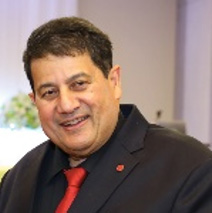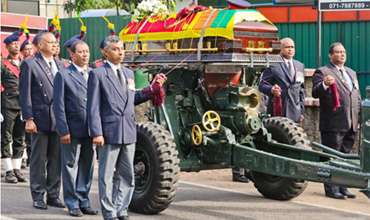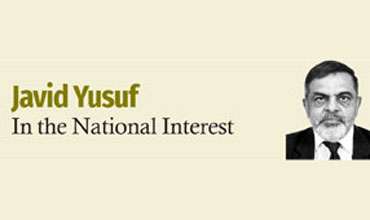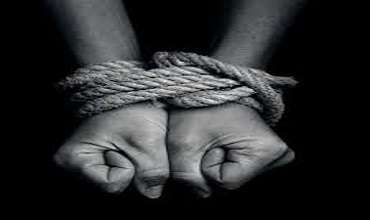The Dharmapala Independence Manifesto: Applicability to the Sept 2024 Election

Professor Janek Ratnatunga
Anagārika Dharmapāla is mainly known as a Buddhist revivalist and the first global Buddhist missionary in modern times. However, he did many other things other than his Buddhist ventures, such as being a leading figure in the Sri Lankan independence movement against British rule; pioneering local cottage industries; opening Free Ayurvedic Clinics; and being one of the founding movers in the revival of Sri Lankan Education.
Dharmapala was also a prolific writer, editor and publisher, as well as an eloquent orator, both in Sinhala and in English. He produced a remarkable collection of writings in the form of pamphlets, diary entries, letters, newspaper articles, and speeches. Many of these have been carefully preserved and are accessible to the public. Researchers have poured over them, and there have been many interpretations of his life taken from this vast body of work.
The last volume of diaries maintained available at the Anagarika Dharmapala Trust library is 1932, written at the age of 67. It is evident from his last available diary notes that he was still hopeful that Ceylon would achieve independence in his lifetime. Dharmapala dreamed of the day when Ceylon would gain independence, in order to breathe life back into local religion and uplift the masses.
Dharmapala journeyed to remote villages in Ceylon to see for himself how the handicapped and local villagers were forced to suffer without proper roads, houses, schools and hospitals. In these journeys he became convinced that the greatness of a nation depended solely on the happiness and contentment of its rural folk. Unfortunately, Anagarika Dharmapala died in 1933, well before Ceylon achieved independence in 1948.
This made me wonder as to what Dharmapala would have included in a hypothetical ‘manifesto’, i.e. a policy document of what he would have prescribed for an independent Ceylon as it extracts itself from its colonial yoke. This article presents such a ‘manifesto’ and considers its applicability to the September 2024 Presidential elections in Sri Lanka.
This hypothetical manifesto is based on actual actions of Dharmapala, on his voluminous diaries, and from oral histories extracted from private conversations I have had with family members who knew him well. I have then taken artistic liberty in collectively naming these prescriptive policies as the ‘Dhamapala Independence Manifesto’.
First a disclosure. I am a close family member of Anagarika Dharmapala, being a great grandnephew. As such, I have had access to private materials that are not accessible to the public. I have also moulded the many different stories of family members into one coherent, ongoing narrative. In addition, I am also a professor of business and economics and have used a modern contemporary lens to articulate what I believe would have been Dharmapala’s vision for independent Ceylon almost 100 years ago; and bring it up to date and relevant to the 2024 Presidential elections.
Before I postulate what his ‘manifesto’ would have looked like – and give it a modern interpretation – I tried to glean what Dharmapala’s political ideology may have been. Was he a socialist, capitalist or communist? Socialism can be traced to the French Revolution (1789); and although Marxism (Communism) had gained a widespread following across much of Europe throughout the late 1800s it was only in 1917 that the Bolshevik Party seized power during the Russian Revolution and created the Soviet Union in 1922. Dharmapala’s last available diary was in 1932, well after these momentous events, and therefore would have had an influence on his political ideology.
Gunadasa Amarasekera, a renowned writer, has analysed Anagarika Dharmapala’s national political action as being mainly two-fold: the first was his struggle to liberate the Sinhalese people from their weak mindset of aping the foreign rulers and their western values and culture; and the second was his economic struggle to rebuild a society with high values based on socialist principles.
Whilst I would agree with his first, i.e. changing mindsets that the British culture was superior to local cultures; I would question second, that Dharmapala based his political actions on socialist principles. Communism and socialism are political and economic systems that are related but often confused with each other. In their purest form, both reject capitalism in favour of wealth equality and the economic power for the working class. Socialism supports the public control of the means of production, whilst communism wants the public control of both the means of production and consumption.
Through his life Dharmapala strived hard to improve the economic power for the working class, but not at the expense of reducing the incentives for wealth creation by entrepreneurs. In other words, he wanted to achieve ‘wealth equality’ by building rather than sharing wealth.
As one of Dharmapala’s main objectives was to break free from British colonial rule, it can be assumed that he favoured limited government intervention in economic affairs, and instead preferred individuals to work for themselves to generate wealth. He was certainly not a communist, as communism as practiced at the time of Dharmapala, was seen as being against organised religion, whilst his mission was to take Buddhism globally. As such, one can safely postulate that embracing communism was not part of Dharmapala’s vision for an independent Ceylon.
The following are some sections of what I postulate would have been in his ‘Independence Manifesto’ had he written one. I have also updated this hypothetical manifesto to the modern context of the 2024 Sri Lanka presidential elections.
Parliamentary System & Institutions of Government
In 1931 – two years before Dharmapala passed away, the State Council of Ceylon was established by the Donoughmore Constitution, with a mix of British and local members. There were 58 members and 7 Ministers.
Almost 40 years before that, in September 1893, Dharmapala had attended the World's Parliament of Religions in Chicago and thus would have been aware of American Presidential system and its ‘separation of powers’ between the executive branch from other aspects of government. From private conversations with family members, I have gleaned that he found merit in a system where the head of government is elected to work alongside, but not as a part of, the legislature.
However, I have come to the conclusion that he favoured the continuation of the the Westminster system after Ceylon’s independence. This system has the doctrine of the separation of powers which divides the institutions of government into three branches: legislative, executive and judicial. The legislature makes the laws; the executive puts the laws into operation; and the judiciary interprets the laws.
This is what Ceylon got after independence, but over the years the separation of powers has largely been eroded. In 2024, Sri Lanka cannot progress unless it gets a leader who promises (and delivers) true separation of powers. Further, I believe that Dharmapala expected as the norm that all Ministers must be well educated and able to handle their portfolios. I am sure that he would not have envisaged in his wildest dreams a Parliament with over 85% not having even the ‘O’ Levels!
Public Service
The public service is responsible for the public administration, public policy, and public services of the departments and executive and statutory agencies of the Government. In Dharmapala’s time the British had established two categories of public servant: an elite Civil Servant and a more general Public Servant. I am firmly of the opinion that Dharmapala would have liked to see more Ceylonese enter the Civil Service. Today, unfortunately, there is no more a ‘Civil Service’, and the job of a public servant is given as a political favour, often without the recipient having any qualifications or experience for the job. In 2024, Sri Lanka cannot progress unless it gets a leader that promises (and delivers) a significant cut in the public service and an increase in the educational standards required for the job.
Law & Order & Racial Harmony
Once the British rulers exited, Dharmapala was adamant that Ceylonese nationals should take over the responsibilities of lawyers, judges, the police and the military; and that no Britisher should stay back in these roles. He expressed this view in many of his notes and also in private conversations with family members. Further, despite Dharmapala being seen as the champion of only the Sinhala working class, it is clear that by ‘Ceylonese’ he meant all races, especially the Sinhalese and Tamils educated persons.
My aunt, Mrs. Mala Hewavitarne Weerasekera, a grandniece of Dharmapala, states that his famous clarion call to the people “Sinhalayo nakitiyow” (Sinhalese wakeup!) is often taken out of context as a racial instigation. “It most certainly was not”, she says. “It was actually a call to really to shake the Sinhala community for their lethargy to join forces with the other communities”. In fact, my aunt says that he often held the Tamil and Muslim communities as examples of a more energetic people. She says that Dharmapala called for unity of action by all communities with a view to self-rule and freedom from the colonial dictates.
She told me that it is clear that Dharmapala held Sir Ponnambalam Ramanathan – a Tamil member of the1911 Legislative Council of Ceylon – in very high esteem; especially after Ramanathan made an impassioned speech describing “the brutality committed by English Men with impunity under the name of British Justice. It was not justice but downright murder by the ruling British race and it was an act of misgovernment for the ruling race to ignore all these atrocities.”
Ramanathan was responsible for the release of the Sinhalese leaders who had been arrested following the 1915 Ceylonese riots, travelling to the UK to make their case. Consequently, Dharmapala named Sir Ponnambalam Ramanathan as a guide and protector of the Sinhalese people, saying, “The day you are taken away from Ceylon, from that day there will be no one to defend the poor, neglected Sinhalese. They are a doomed people with no one to guide and protect them.”
These narratives further confirm the non-racial mind-set of both Dharmapala and Ramanathan. Both were more interested in breaking free of British rule rather than creating disharmony amongst the races.
Therefore, I firmly believe that Dharmapala, in his hypothetical ‘manifesto’, would have recommended policies to ensure that Ceylon’s legal framework remains a mixture of legal systems of Roman-Dutch law, English law, Kandyan law, Thesavalamai, and Muslim law. This was, in fact, what transpired after independence until the Sri Lankan Constitution of 1972 changed the country's name from Ceylon to Sri Lanka, established the country as an independent republic, and became the highest law of the island.
In 2024, Sri Lanka cannot progress unless it gets a leader who ensures that the Constitution can be interpreted by the judiciary and executive institutions of Government independent of political machinations.
Food & Agriculture (Farming/Fishing)
Referencing his notes and diaries, and interpreting the many oral narratives of family members, it is clear that Dharmapala was very concerned that most of Ceylon’s tea and rubber plantations were owned by British companies. Dharmapala was also very concerned that the sale of produce of these estates was controlled by commodities markets in London, with inadequate returns coming to Ceylon.
However, he was against ‘nationalisation’ of these plantations after independence. Instead, he encouraged Ceylonese entrepreneurs to work hard to take private ownership of these estates, even before independence. There are many narratives of strategies implemented by his family members to buy these estates from the British owners who favoured selling to other Britishers.
In the case of rice and coconut estates, Dharmapala recognised that whilst these were more under the control of local landowners and farmers, the system of distribution was so poor that the middlemen made the bulk of the profit. The same issues were there for the highly fragmented fishing industry at the time.
Therefore, I have postulated that had Dharmapala written an ‘independence manifesto’, whilst he would have been averse to too much state intervention in land ownership; he, however, would have advocated a system of distribution for agricultural produce and fish to be established under state control.
Today, in Sri Lanka, rice, coconuts and vegetables are still produced by a large number of small farmers. This was due to the 1972 Land Reform Act that limited the maximum extent of agricultural land that could be owned by an individual to 50 acres. These small landowners then have to deal with middlemen to get their produce to the market. Many people criticize the current marketing and distribution system due to fluctuating prices, with middlemen margins as high as 50% to 100% of cost.
In 2024, Sri Lanka must get a leader who ensures that proper marketing channels are developed so that our farmers and fishermen get a decent return for their hard work.
Local Industry
Dharmapala is credited with contributing towards the upliftment of the rural economy by starting vocational training centres for carpentry, handloom textiles and other rural cottage industries. In his many writings he advocates the promotion of cottage industries for the economic regeneration of the country and holds up Japan as the model. His 1889 visit to Japan had given Dharmapala first-hand experience of Japan’s economic development.
In his many writings, he expresses concern that Ceylon’s tea, rubber, and other commodities were being shipped to Britain as raw materials that were then returned to Ceylon in the form of finished products at exorbitant prices. Therefore, it could be confidently postulated that Dharmapala would have, in his ‘independence manifesto’, promoted policies to develop local industry so that they could compete with any imported product locally, and even globally.
His own father’s firm, H. Don Carolis & Sons, was a shining example of this global concept, with its furniture even making its way to Buckingham Palace. Today, the company, founded in 1860, is still operating 164 years later, and is probably Sri Lanka’s oldest company. However, many other Sri Lankan companies that operated to service the domestic market were completely overwhelmed with the opening of the economy in the late 1970s, and the flooding of foreign brands. Along with the demise of these local manufacturing industries, was the demise of manufacturing skills in the country. It was much easier to get an ‘Agency’ to market overseas brands.
Today, Sri Lanka still has only a very few companies that are competing in global markets. Our tea and rubber are still sold mainly as commodities, with the country even having to import even the Tea Bags to fill the loose tea into. In addition, foreign brands are exploiting our cheap, educated labour in our garment and IT support-services industries. Furthermore, local entrepreneurs are completely stifled due to a plethora of laws and regulations controlling business. For example, in Sri Lanka, all companies must be audited, whilst small private companies in the USA and Australia need not have a compulsory audit done.
In 2024, Sri Lanka must get a leader who ensures that risk taking, and entrepreneurship, are encouraged; unnecessary rules and regulations controlling business are abolished; and the local manufacturing industry is supported by curtailing foreign imports via significant import taxes, and restrictions of foreign exchange provided for importing luxury goods.
Mechanisation, Transport and Energy
Interestingly, Anagarika Dharmapala was an early adopter of using motor transport to take his message of Buddhist revivalism and anti-colonialism throughout Ceylon. He converted a truck, with all living facilities such as sleeping quarters, a writing table and a pulpit on the side from which he used to address the public. This vehicle, called “Sobana Maligawa”, has been restored and available for public viewing.
However, despite the willingness of Dharmapala to embrace mechanisation, he was concerned about its impact on small scale farms as found throughout Ceylon in his time. Dharmapala was aware of the widespread use of tractors that became popular during the 1920's for ploughing and cultivation and was concerned that such machines would gradually replace cattle and buffaloes on the farm. In his notes, he expresses concern that traditional farming techniques that were sustainable within the country, may soon be replaced by machinery and petrol that must be sourced from overseas. Therefore, in his ‘manifesto’ one can postulate that Dharmapala would have had policies in place to limit mechanisation in small farms, especially if the tractors and fuel had to be imported from Britain.
Today, although energy costs are a major issue in Sri Lanka for transport and tourism, the country still has very little mechanisation in the Agricultural sector. One of the key factors for this is, once again, the 1972 Land Reform Act that limited individual agricultural land to 50 acres. This made large-scale mechanisation uneconomic, even when family members joined their estates. The unforeseen and perhaps positive consequences of this is that small-scale farmers still use cattle and buffaloes and thus save the country significant foreign exchange in terms of machinery and energy costs. Further, these animals not only produce natural fertilizers, but they also aerate the soil with their hoofs. Unfortunately, these benefits and savings have been negated by the use of chemical fertilizers to make the land have higher yields. This has drug addicted the soil, thus requiring even more chemical fertilizers to maintain output.
In 2024, Sri Lanka must get a leader who works hard towards reducing the country’s dependency on foreign sourced machinery and energy, especially in the agricultural sector. Furthermore, such a leader must take steps towards weaning the country off chemical fertilizers and re-introduce age-old farming techniques such as soil rotation and animal manure fertilization.
Health
Anagarika Dharmapala was a pioneer in bringing free health services to the poor, by opening free Ayurvedic Clinics that were financed via sizeable donations from Mary Foster, a Hawaiian Princess. The Foster-Robinson Hospital for the Poor.
The Ceylon Medical School was established in 1870, whilst Ayurvedic knowledge was passed on based on prescriptions handed down from generation to generation. Dharmapala considered it important that training in Ayurvedic medicines be formalised so that there is consistency in the quality of the health care provided. Thus, in his hypothetical ‘independence manifesto’, I have postulated that Dharmapala would have had policies in place such that all Ceylonese should have free access to both western and eastern health care systems.
Today Sri Lanka has a universal health care system that extends free healthcare to all citizens, which has been a national priority since independence. Much of this can be traced to the pioneering work of Dharmapala. Sri Lanka scores higher than the regional average in healthcare, having a high Life expectancy and a lower maternal and infant death rate than many more economically developed countries.
However, in 2024, this universal health care system is straining at the seams. The biggest issue is that, since the declaration of bankruptcy, many of the doctors and other health care professionals cannot see a future for them or their families and are seeking greener pastures overseas.
Even the large number of private hospitals that have appeared more recently in Colombo and its suburbs – due to the rising income and expectations of people – are finding it difficult to maintain quality levels of private healthcare services despite charging high prices. This is not only due to the dearth of medical professionals, but also the lack of western medicines due to budget constraints after bankruptcy.
In 2024, Sri Lanka must get a leader who ensures that the country’s health care professionals are provided a remuneration package that does not require them to work inordinate hours in private practice to be on par with those in the business sector. This can be via generous housing and tax incentives and significant increases in basic salaries. Further, such a leader must boost resources in medical research so that Sri Lanka can at least make generic drugs without relying on imports from India.
Education
At a time when Ceylon had mainly missionary schools teaching a Christian influenced curriculum, Dharmapala was a force behind the revival of Buddhist education. He guided the establishment of Buddhist schools throughout the island – which saw the birth of Ananda, Nalanda, Mahinda, Dharmaraja Colleges for boys and Vishaka, Mahamaya and Sangamitta for girls. He was one of the founding movers Vidyodaya Pirivena (now The University of Sri Jayewardenepura), the second oldest University in Sri Lanka and the first University established in Independent Ceylon.
The University College Colombo, affiliated to the University of London, had already started issuing degrees from 1923 onwards, where the study was in the English language. Dharmapala, despite his strongly anti-British colonialism stance, was fluently bi-lingual. Thus he was able to be a nationalist with an international outlook and therefore recognized the value of the English language.
Thus, in his hypothetical ‘independence manifesto’, I have postulated that Dharmapala would have had policies in place so that English is the language of instruction in major State-run schools and universities; and produce graduates that would be employable in business and commerce, who then would compete in global markets.
Today, in Sri Lanka, English is not the main language of instruction in the public university system, including medical schools. This has resulted in limited study resources such as textbooks and research information on Google and other online sources. The graduates are therefore often ill-prepared for the job market and not employable by the private sector.
This has resulted in lowly-ranked foreign universities joining with local private businesses to market poor-quality overseas degree and professional training programs in English in Sri Lanka. This continuing dependence in western universities would have been anathema to Dharmapala.
In 2024, Sri Lanka must get a leader who can restore Sri Lankan university education back to the high standard it once enjoyed. One model is to implement the Indian Institute of Technology (IIT) model, where extremely selective entry is coupled with world-class instruction. IIT invites Indian professors who work in highly ranked western universities, and have international reputations, to return to the homeland and provide instruction in their area of expertise for a semester or two. Almost all of these professors have provided their services free-of-charge. Today, IIT graduates are rated higher than those of MIT, and are running mega IT corporations worldwide.
Summary
There are many issues such as religious freedom, ethnicity, language, finance, taxation, land & housing and international trade & relations that are of vital importance in Sri Lanka today that have been addressed by Dharmapala in his voluminous writings and oral discussions almost 100 years ago. I have not included them in my hypothetical ‘Dharmapala Independence Manifesto’ due to space restrictions. However, the few policies that I have addressed, and their relevance to Sri Lanka today, should make fascinating reading as Sri Lankans vote in the 2024 presidential elections.
Professor Janek Ratnatunga is a former Associate Dean of Business & Economics at Monash University and currently CEO of the Institute of Certified Management Accountants of Australia & New Zealand (CMA ANZ).
-
Still No Comments Posted.














Leave Comments